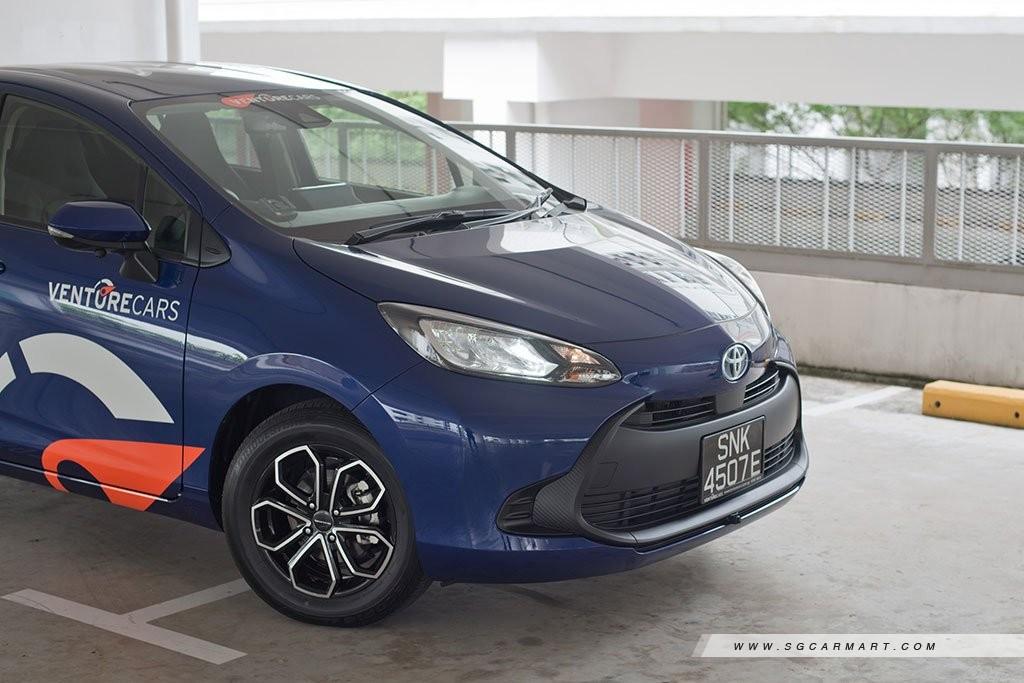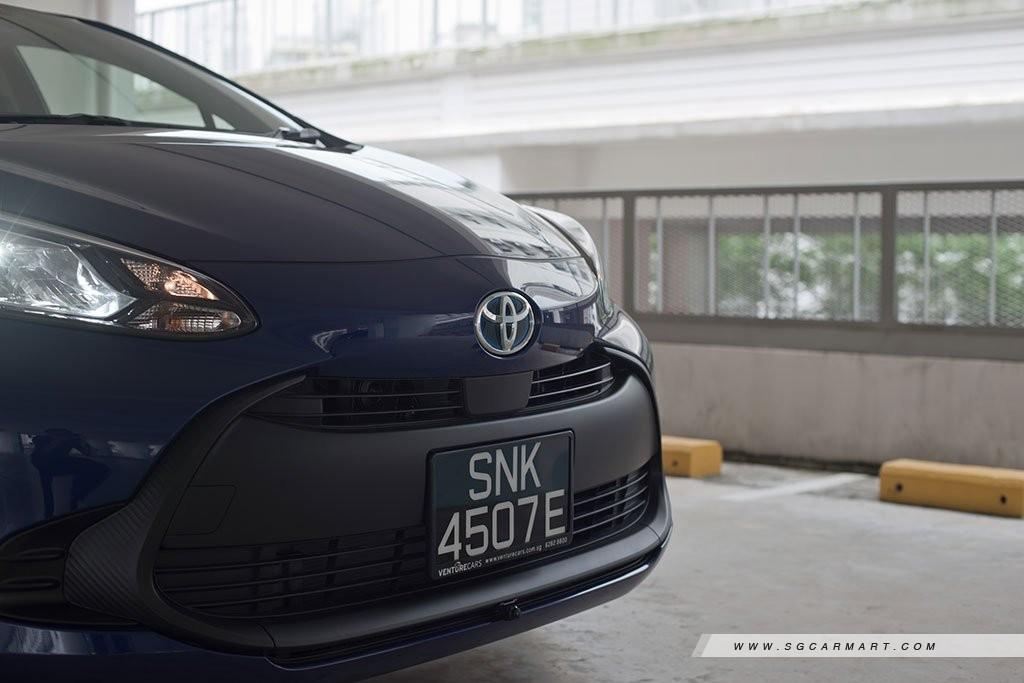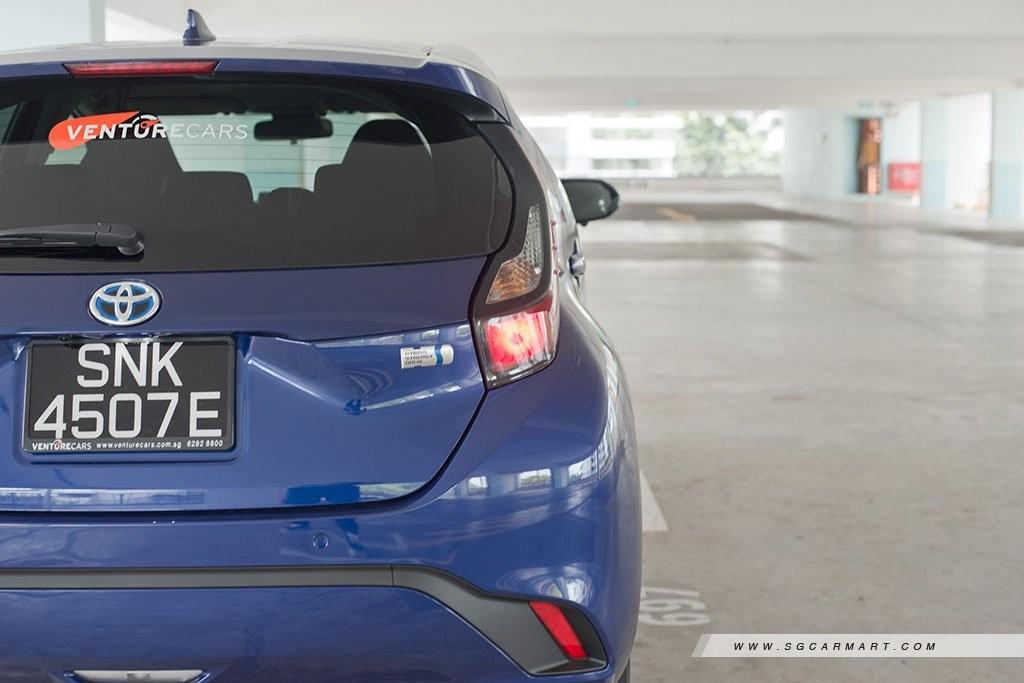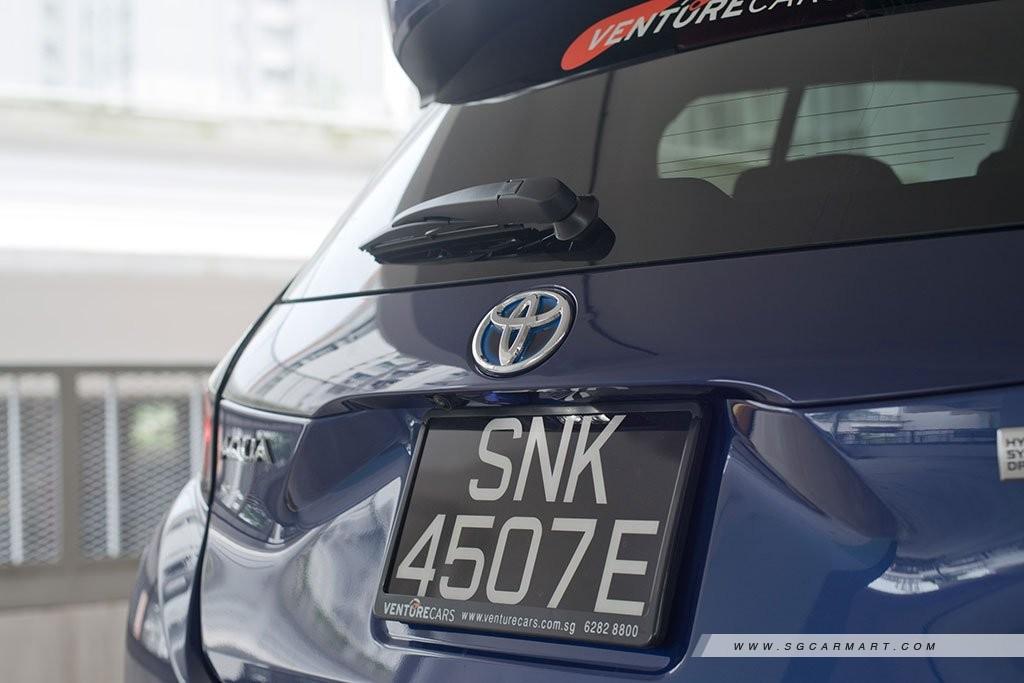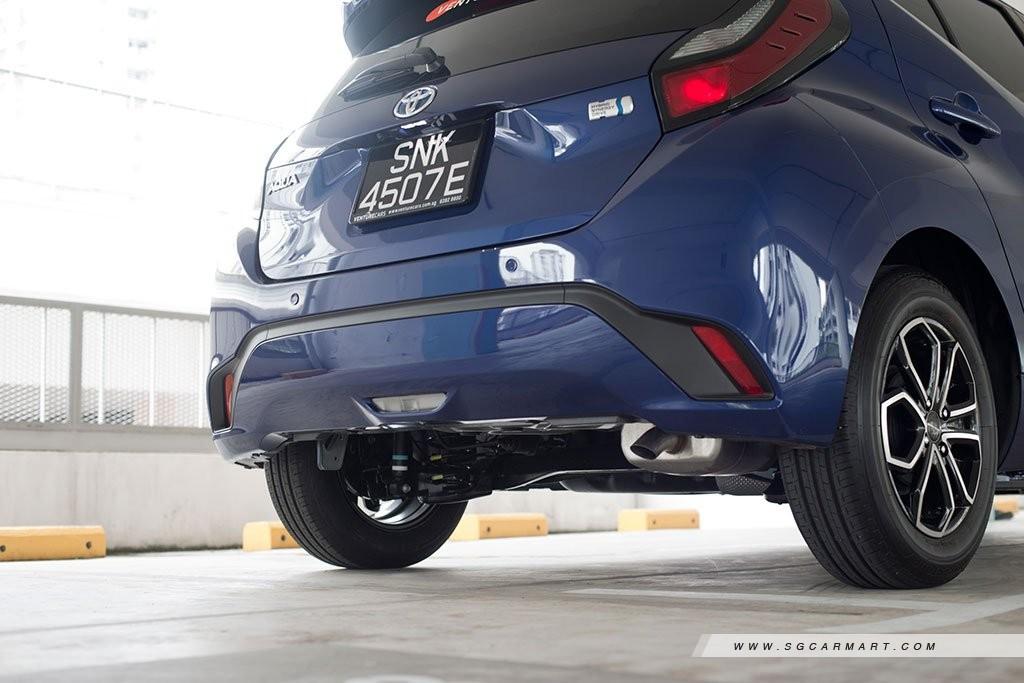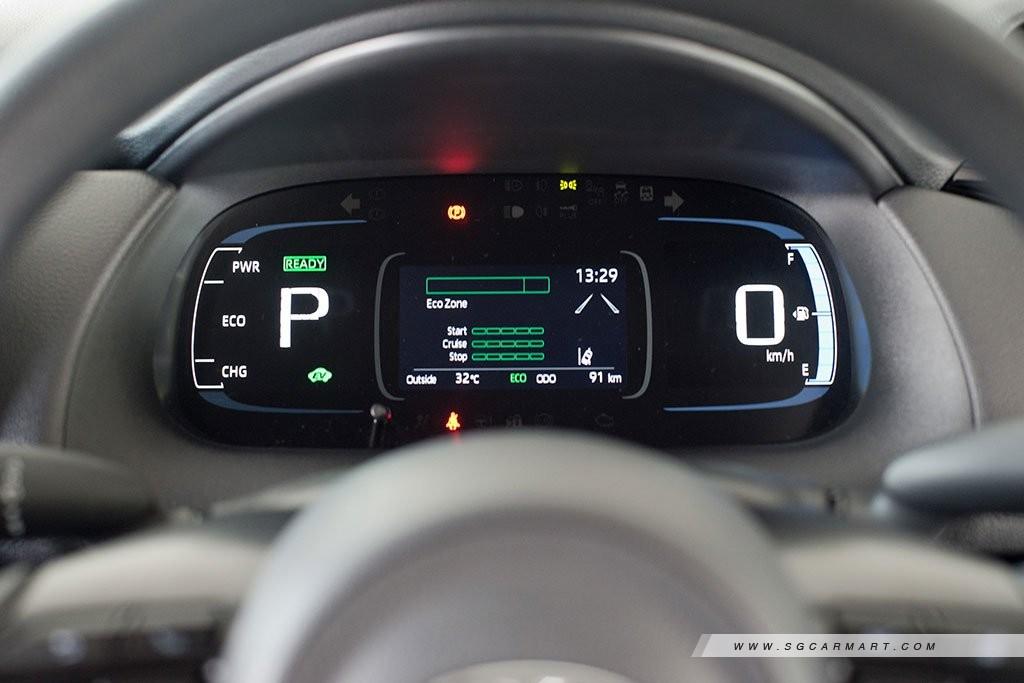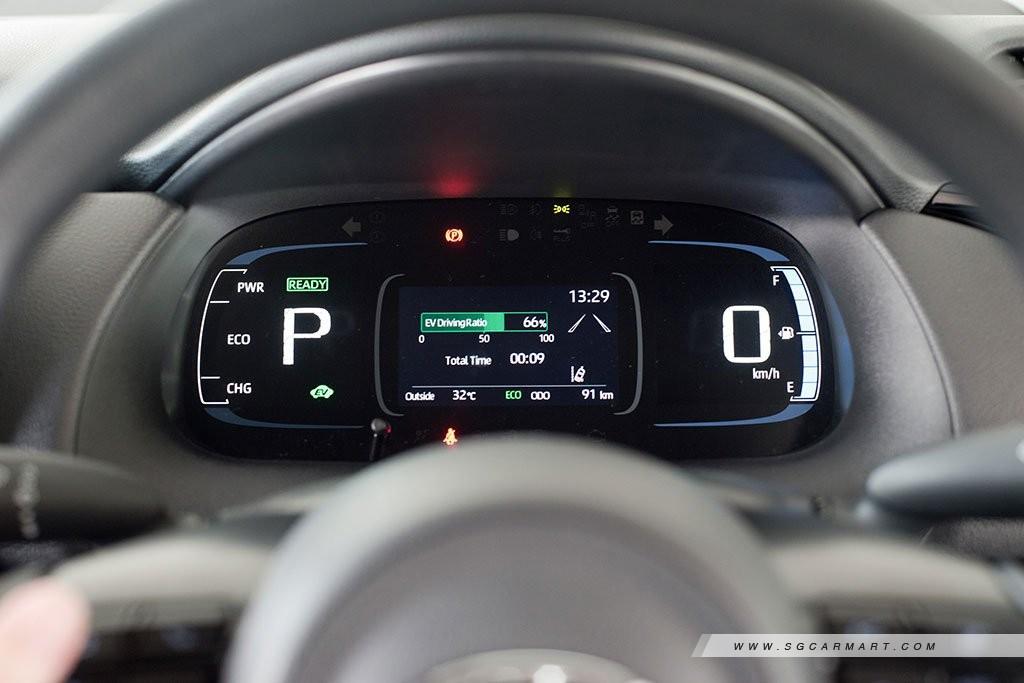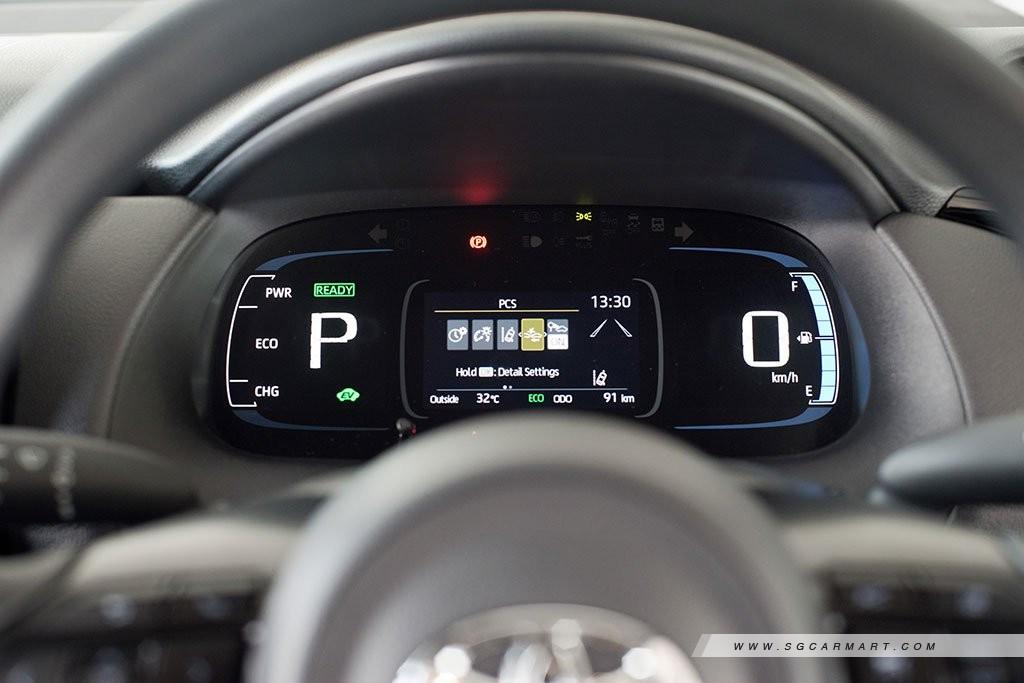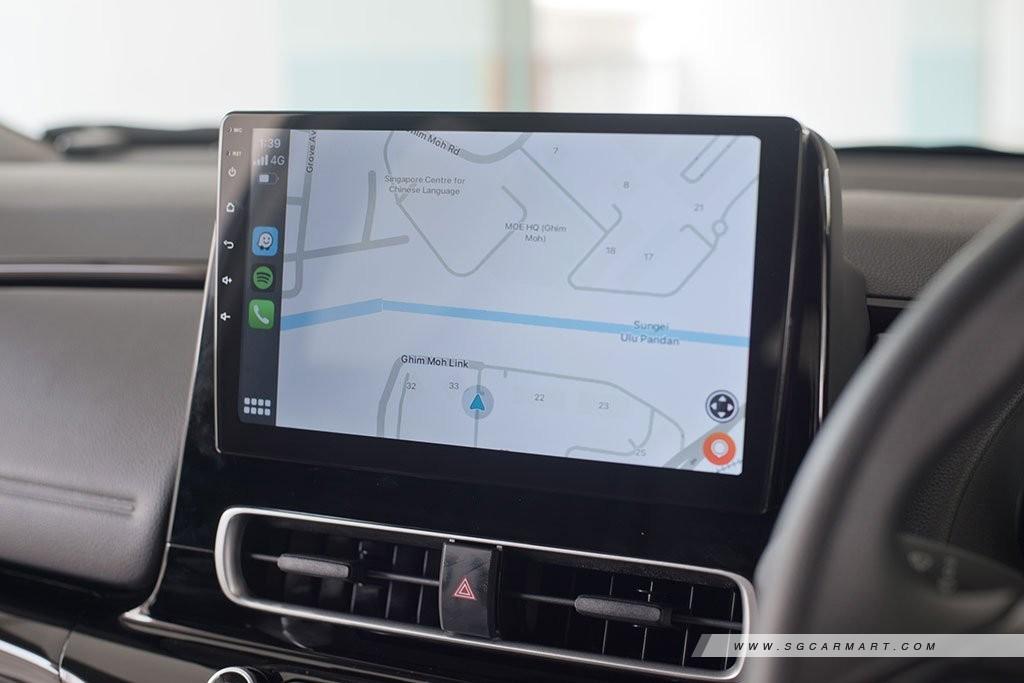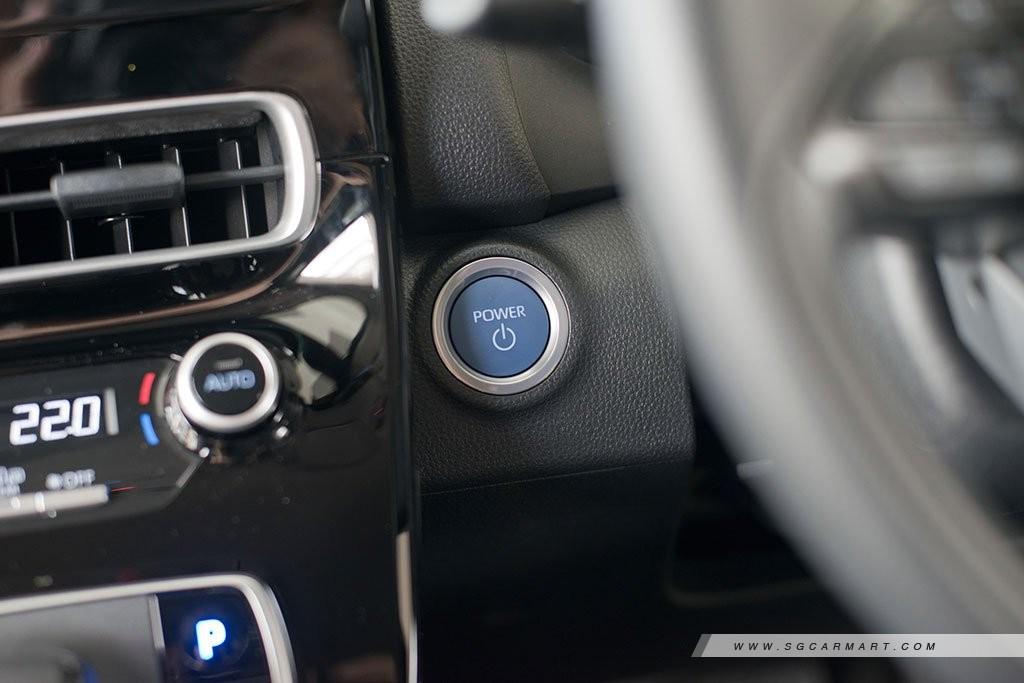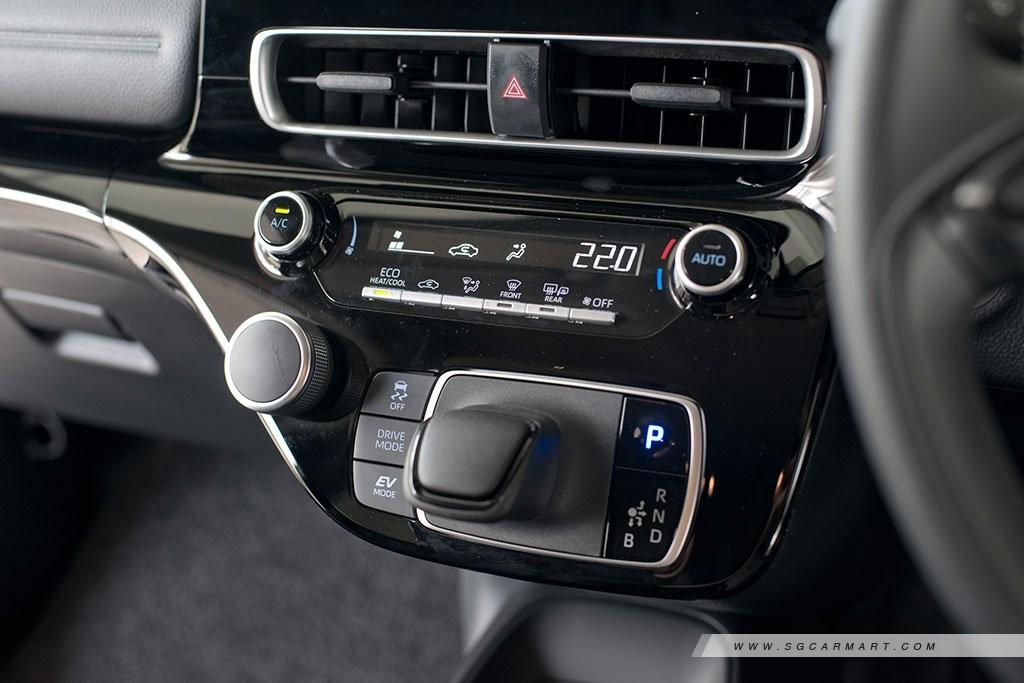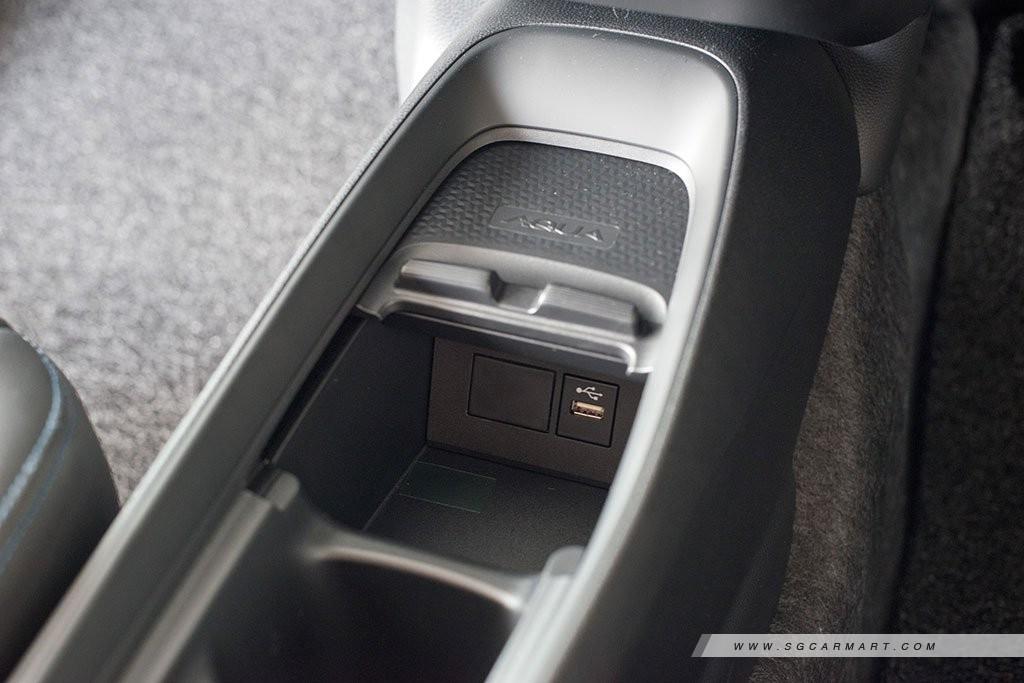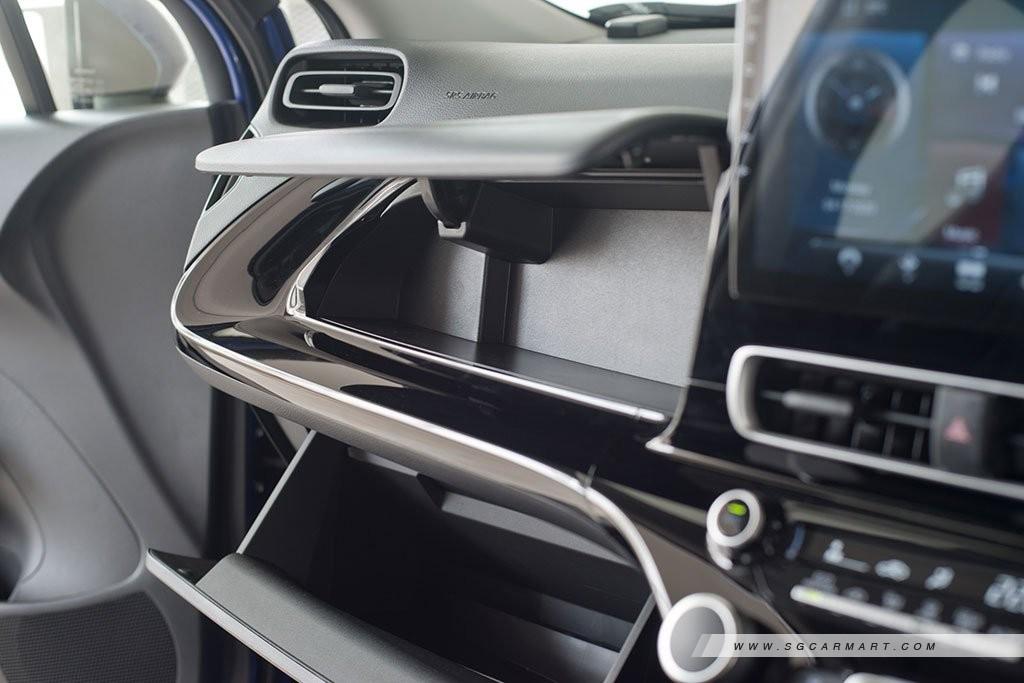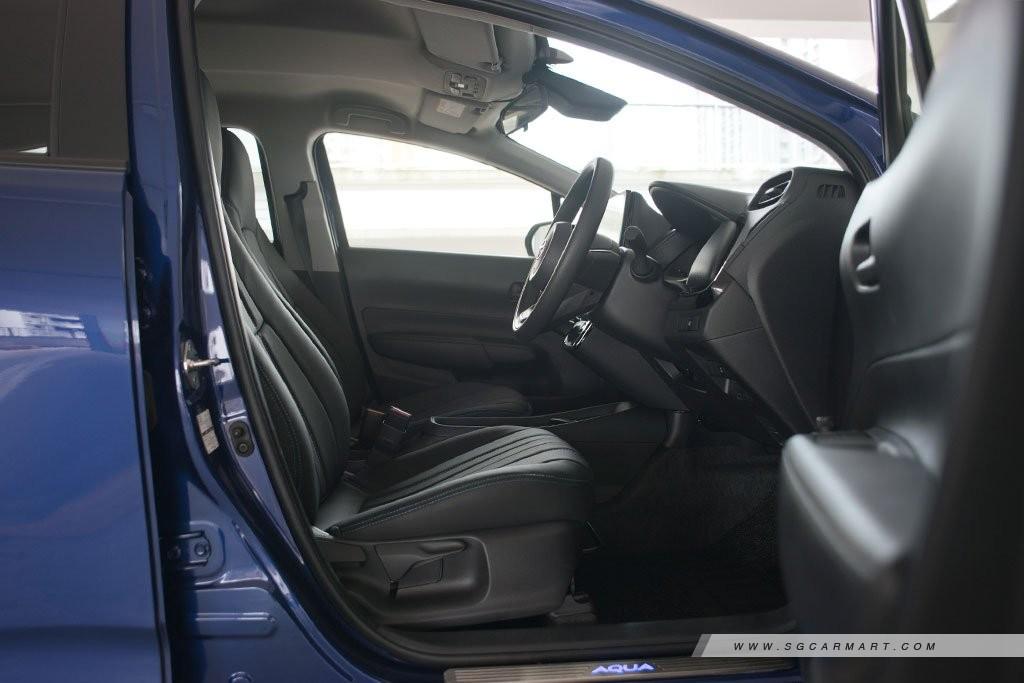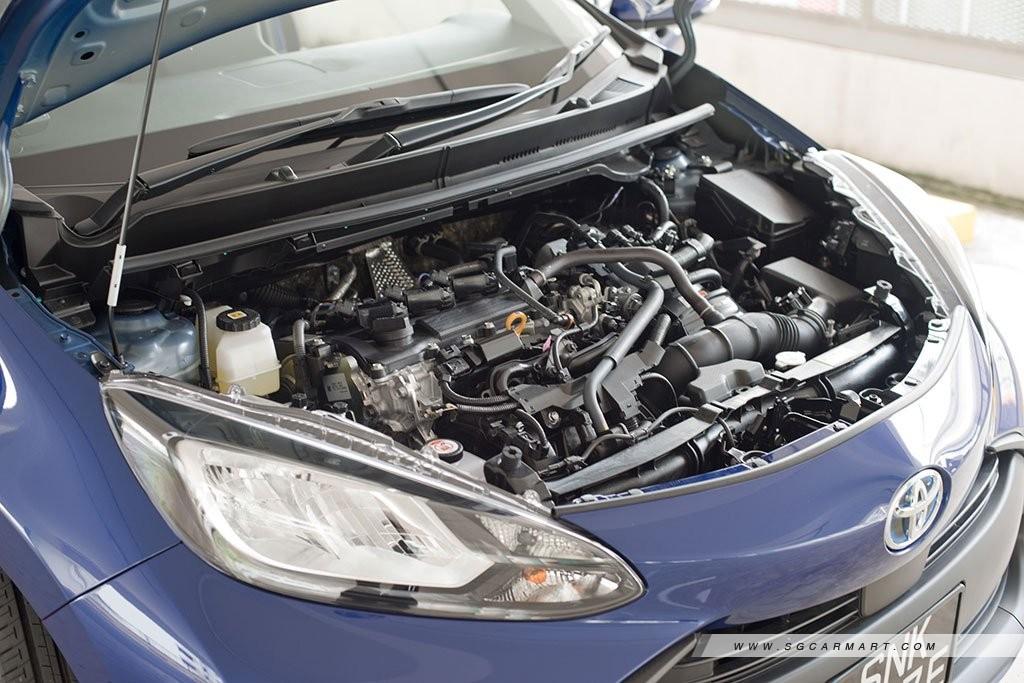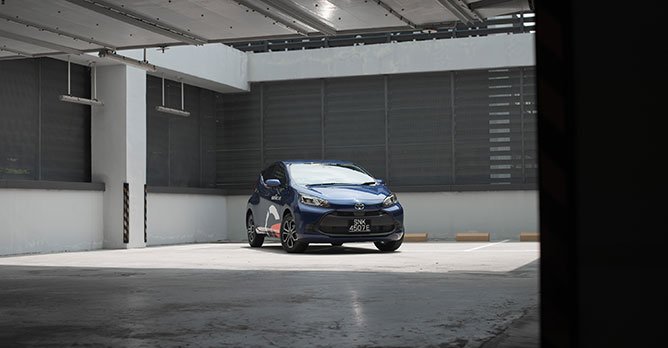Toyota Aqua Hybrid 1.5 X (A) Review
21 Apr 2023|33,843 views
What We Like
Decently sprightly and peppy
Remarkably settled ride
Excellent fuel efficiency
All-digital dash is easy on the eyes
Good range of safety assistance features
What We Dislike
Rear bench can feel cramped for taller adults
Cabin not the best at keeping out road noise
A trip to Japan always surfaces bits of the country you (frustratingly) will not find elsewhere in the world: Vending machines dispensing hot corn soup, train-shaped bento boxes, and, of course, cars of all shapes and forms - including this Toyota Aqua.
The supermini wasn't always this exclusive. For those old enough to recall, the Aqua's predecessor was sold internationally as the Prius C back in the early 2010s as part of an expansion of the Prius family - and sold well, too, crossing the 1 million sales milestone.
With the majority of Toyota's lineup already shoved in with extra electric motors and batteries over time (SUVs included), however, the need for a standalone hybrid model has slowly diminished. It's a shame the Aqua has now become JDM-only, because as the smallest model in Toyota's lineup locally, it still offers a unique experience not replicated by its siblings.
Bluish-green supermini
At just over four metres long, and under 1.7 metres wide, the Aqua is dwarfed by even P-plate driver-friendly hatches like the Mazda 3 Hatchback and VW Golf. It resides in a segment occupied only by the most pint-sized - among the likes of the Honda Jazz and VW Polo.
Over the previous generation, and especially the facelifted model, the design cues feel more evolutionary than revolutionary on first glance. Rounded lights are wrapped around the front fascia, and are underlined between and beneath with a matte black bumper.
The changes are more apparent in the rear, where simultaneously slimmed-down and 3D-ified taillights mounted high up give the car a neater looking derriere. Another significant difference adding to the car's new visual character is the quickly-rising shoulder line.
Like the standalone Prius C, the Aqua's wheels are pushed to its edges. That, plus the rather bulbous rear wheel arches, give the car a rather squat stance.
To work well with what one has been given
Modern Toyotas are arguably still not the final word in sophisticated interiors, but they've done commendably in bringing their designs up to date without forgetting the functionality we've always loved. While downsized, the same story applies for the Aqua.
Right beyond the new three-spoke steering wheel - far sleeker than the chunky four-spoke one previously - lies an all digital driver's display which is wonderful to read. This is thanks especially to a 4.2-inch multi-colour screen in the middle in which information displayed doesn't feel too cramped.
While an abundance of hard plastics make it clear that this is still an entry-point to Toyota's hybrid range, fit and finish are generally unfaultable. Some contrast is added courtesy of a gloss black lining running across the dash.
Of note is that because the Aqua is parallel imported, aftermarket head units might differ. The 10-inch Android-powered infotainment screen on our test unit was decently intuitive and responsive, offering features seen on more premium cars such as wireless Apple CarPlay and Android Auto connectivity, and a 360-degree parking camera.

Having said that, the Aqua does relatively well with its physical endowments, giving 1.75m-tall passengers just about enough head and legroom at the rear (over the previous generation, wheelbase length has gone up 50mm).
As with other bite-sized Japanese contemporaries, smart packaging translates into a nice spread of storage spaces within the Aqua's tiny frame, including four cup holders along the centre console, and an additional glovebox.
Peppy eco-warrior

Although losing out to those two larger siblings in space, the Aqua definitely has the edge in terms of driver engagement.
The laws of physics are impossible to deny; its lower centre-of-gravity, aided by floor-mounted batteries, naturally plants it more firmly to the ground. Bear in mind that this is no hot hatch, and you'll appreciate that the light steering is still adequately direct.

A declared maximum of 114bhp produced by its electric motor and 1.5-litre in-line three belies its real-world ability/character, which can be described more as light-footed and perky.
Even with five on board, the Aqua never feels like it's lacking in power. That electric motor doesn't just make stop-and-go traffic more tolerable by making acceleration silent, but provides an initial immediacy of torque.
Considering it has to carry the extra weight of that and a small battery, the Aqua is also relatively light, tipping the scales at 1,120kg unladen (the Honda Jazz Hybrid and Nissan Note e-Power are both 100kg heavier). That, plus its small size, lends itself to the car's ability to dart around, almost in a point-and-squirt manner.
One 'peculiarity' you wouldn't have found in the Prius C is a new Power+ drive mode. Apart from ostensibly increasing power delivery, it actually kicks the car's regenerative braking system into action. This is nowhere near one-pedal driving, but the increased rate of deceleration is notable, and helps recoup energy.

True to Toyota's claim, the car is very willing to move about on pure electric power whenever possible (at up to speeds of 40-ish km/h, and when coasting). Over two days that skewed more towards city traffic, we managed a consumption figure of 24km/L (which was still on the rise towards the end of our drive).
The single noteworthy weakness of the Aqua is its cabin insulation (or lack thereof) - against the occasional whir of the hybrid system and road noise. This was made particularly obvious when we were routed home via the KPE one evening. Having said that, it's far from a deal-breaker against the other qualities of the hatch.
Consummate urban dweller
"A compact car for the next 10 years", is how Toyota has always wanted us to think of the Aqua (or Prius C).
Its petrol-electric drivetrain is supposed to future-proof it against the snarling, insatiable monster that we know as Emissions Standards.
Meanwhile, a tidy sum of safety assistance features is targeted at ensuring the little hatch doesn't feel woefully unequipped as the dawn of the 2030s draws closer. Out of the box, the Aqua comes with the latest-generation Toyota Safety Sense, which includes Road Sign Assist, Lane Keeping Assist, and adaptive cruise control.
But the Aqua is ultimately also a car you'd enjoy over the long term because of the surprising joy one feels at the helm, no matter when weaving through denser traffic on the CTE at 6:30pm, or cruising down Lane 1 at 10:00pm in pure-EV mode.
In the auto world, cars that are unambiguous in their purpose, then unpretentious in their execution, often wind up being the ones we love the most. As an unabashedly economy-oriented supermini that is also amenable to controlled doses of playfulness, the Aqua is exactly the sort of car one feels at home in in a city like ours - and thus also a car that is easy to appreciate.
Here are a few other cars that may interest you!
The well-equipped, easy-to-drive and efficient Yaris Cross is a stellar choice for the younger, bolder driver
Bigger, better-equipped and more refined, the new generation Volkswagen Polo is a surprisingly complete supermini with easy appeal
Now hybridised, the Honda Jazz delivers ample refinement and efficiency with its traditionally roomy interior
The Nissan Note e-Power is not just good looking, but practical and accessible too while offering better efficiency and technology
What We Like
Decently sprightly and peppy
Remarkably settled ride
Excellent fuel efficiency
All-digital dash is easy on the eyes
Good range of safety assistance features
What We Dislike
Rear bench can feel cramped for taller adults
Cabin not the best at keeping out road noise
A trip to Japan always surfaces bits of the country you (frustratingly) will not find elsewhere in the world: Vending machines dispensing hot corn soup, train-shaped bento boxes, and, of course, cars of all shapes and forms - including this Toyota Aqua.
The supermini wasn't always this exclusive. For those old enough to recall, the Aqua's predecessor was sold internationally as the Prius C back in the early 2010s as part of an expansion of the Prius family - and sold well, too, crossing the 1 million sales milestone.
With the majority of Toyota's lineup already shoved in with extra electric motors and batteries over time (SUVs included), however, the need for a standalone hybrid model has slowly diminished. It's a shame the Aqua has now become JDM-only, because as the smallest model in Toyota's lineup locally, it still offers a unique experience not replicated by its siblings.
Bluish-green supermini
At just over four metres long, and under 1.7 metres wide, the Aqua is dwarfed by even P-plate driver-friendly hatches like the Mazda 3 Hatchback and VW Golf. It resides in a segment occupied only by the most pint-sized - among the likes of the Honda Jazz and VW Polo.
Over the previous generation, and especially the facelifted model, the design cues feel more evolutionary than revolutionary on first glance. Rounded lights are wrapped around the front fascia, and are underlined between and beneath with a matte black bumper.
The changes are more apparent in the rear, where simultaneously slimmed-down and 3D-ified taillights mounted high up give the car a neater looking derriere. Another significant difference adding to the car's new visual character is the quickly-rising shoulder line.
Like the standalone Prius C, the Aqua's wheels are pushed to its edges. That, plus the rather bulbous rear wheel arches, give the car a rather squat stance.
To work well with what one has been given
Modern Toyotas are arguably still not the final word in sophisticated interiors, but they've done commendably in bringing their designs up to date without forgetting the functionality we've always loved. While downsized, the same story applies for the Aqua.
Right beyond the new three-spoke steering wheel - far sleeker than the chunky four-spoke one previously - lies an all digital driver's display which is wonderful to read. This is thanks especially to a 4.2-inch multi-colour screen in the middle in which information displayed doesn't feel too cramped.
While an abundance of hard plastics make it clear that this is still an entry-point to Toyota's hybrid range, fit and finish are generally unfaultable. Some contrast is added courtesy of a gloss black lining running across the dash.
Of note is that because the Aqua is parallel imported, aftermarket head units might differ. The 10-inch Android-powered infotainment screen on our test unit was decently intuitive and responsive, offering features seen on more premium cars such as wireless Apple CarPlay and Android Auto connectivity, and a 360-degree parking camera.

Having said that, the Aqua does relatively well with its physical endowments, giving 1.75m-tall passengers just about enough head and legroom at the rear (over the previous generation, wheelbase length has gone up 50mm).
As with other bite-sized Japanese contemporaries, smart packaging translates into a nice spread of storage spaces within the Aqua's tiny frame, including four cup holders along the centre console, and an additional glovebox.
Peppy eco-warrior

Although losing out to those two larger siblings in space, the Aqua definitely has the edge in terms of driver engagement.
The laws of physics are impossible to deny; its lower centre-of-gravity, aided by floor-mounted batteries, naturally plants it more firmly to the ground. Bear in mind that this is no hot hatch, and you'll appreciate that the light steering is still adequately direct.

A declared maximum of 114bhp produced by its electric motor and 1.5-litre in-line three belies its real-world ability/character, which can be described more as light-footed and perky.
Even with five on board, the Aqua never feels like it's lacking in power. That electric motor doesn't just make stop-and-go traffic more tolerable by making acceleration silent, but provides an initial immediacy of torque.
Considering it has to carry the extra weight of that and a small battery, the Aqua is also relatively light, tipping the scales at 1,120kg unladen (the Honda Jazz Hybrid and Nissan Note e-Power are both 100kg heavier). That, plus its small size, lends itself to the car's ability to dart around, almost in a point-and-squirt manner.
One 'peculiarity' you wouldn't have found in the Prius C is a new Power+ drive mode. Apart from ostensibly increasing power delivery, it actually kicks the car's regenerative braking system into action. This is nowhere near one-pedal driving, but the increased rate of deceleration is notable, and helps recoup energy.

True to Toyota's claim, the car is very willing to move about on pure electric power whenever possible (at up to speeds of 40-ish km/h, and when coasting). Over two days that skewed more towards city traffic, we managed a consumption figure of 24km/L (which was still on the rise towards the end of our drive).
The single noteworthy weakness of the Aqua is its cabin insulation (or lack thereof) - against the occasional whir of the hybrid system and road noise. This was made particularly obvious when we were routed home via the KPE one evening. Having said that, it's far from a deal-breaker against the other qualities of the hatch.
Consummate urban dweller
"A compact car for the next 10 years", is how Toyota has always wanted us to think of the Aqua (or Prius C).
Its petrol-electric drivetrain is supposed to future-proof it against the snarling, insatiable monster that we know as Emissions Standards.
Meanwhile, a tidy sum of safety assistance features is targeted at ensuring the little hatch doesn't feel woefully unequipped as the dawn of the 2030s draws closer. Out of the box, the Aqua comes with the latest-generation Toyota Safety Sense, which includes Road Sign Assist, Lane Keeping Assist, and adaptive cruise control.
But the Aqua is ultimately also a car you'd enjoy over the long term because of the surprising joy one feels at the helm, no matter when weaving through denser traffic on the CTE at 6:30pm, or cruising down Lane 1 at 10:00pm in pure-EV mode.
In the auto world, cars that are unambiguous in their purpose, then unpretentious in their execution, often wind up being the ones we love the most. As an unabashedly economy-oriented supermini that is also amenable to controlled doses of playfulness, the Aqua is exactly the sort of car one feels at home in in a city like ours - and thus also a car that is easy to appreciate.
Here are a few other cars that may interest you!
The well-equipped, easy-to-drive and efficient Yaris Cross is a stellar choice for the younger, bolder driver
Bigger, better-equipped and more refined, the new generation Volkswagen Polo is a surprisingly complete supermini with easy appeal
Now hybridised, the Honda Jazz delivers ample refinement and efficiency with its traditionally roomy interior
The Nissan Note e-Power is not just good looking, but practical and accessible too while offering better efficiency and technology
Also read our comparison article on:
Toyota Aqua Hybrid vs Nissan Note e-POWERThank You For Your Subscription.





